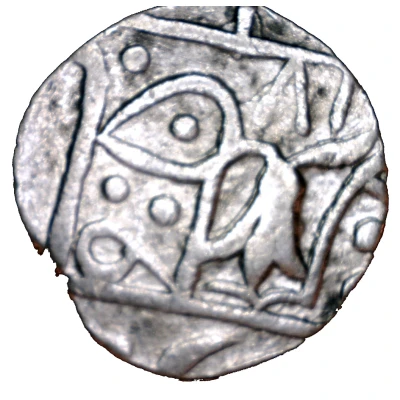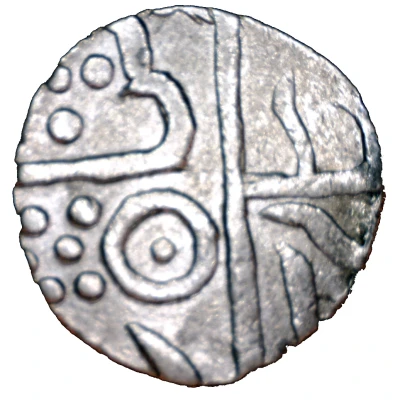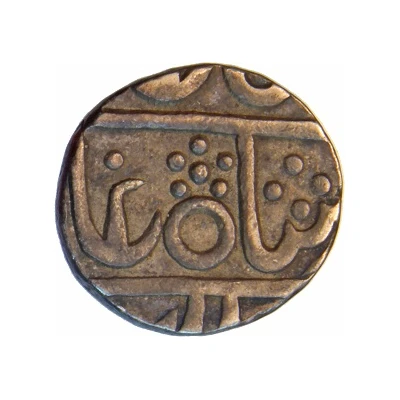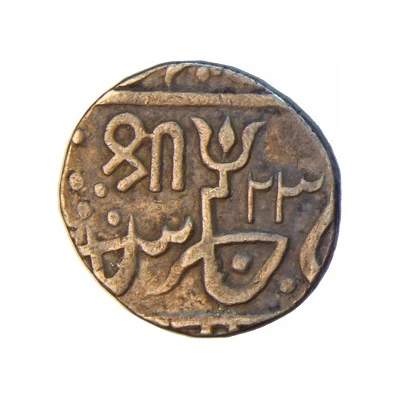![1 Rupee - Muhammad Akbar II [Baija Bai] ND (1827) front](/storage/images/1-Rupee-Muhammad-Akbar-II-Baija-Bai_111588_1.webp)
![1 Rupee - Muhammad Akbar II [Baija Bai] ND (1827) back](/storage/images/1-Rupee-Muhammad-Akbar-II-Baija-Bai_111588_2.webp)
![1 Rupee - Muhammad Akbar II [Baija Bai] ND (1827) photo](/storage/images/1-Rupee-Muhammad-Akbar-II-Baija-Bai_111588_1.webp)
© Parimal (CC BY-NC-SA)
1 Rupee - Muhammad Akbar II [Baija Bai] ND
1827 year| Silver | 11.00 g | 23.00 mm |
| Issuer | Princely state of Gwalior (Indian princely states) |
|---|---|
| Regent | Baiza Bai (1827-1833) |
| Type | Standard circulation coin |
| Year | 1827 |
| Value | 1 Rupee |
| Currency | Rupee |
| Composition | Silver |
| Weight | 11.00 g |
| Diameter | 23.00 mm |
| Shape | Round |
| Demonetized | Yes |
| Updated | 2024-10-05 |
| Numista | N#111588 |
|---|---|
| Rarity index | 89% |
Reverse
Nagari "Shri" (श्री) for Baija Bai and five-flowered symbol
Regnal Year 23
Comment
Ruler: Daulat RaoNote: The regnal year 23 becomes frozen with this issue on all size coins of this mint (identified by five-flowered symbol) and of Lashkar Mint.
Interesting fact
The 1 Rupee coin from the Princely state of Gwalior, issued during the reign of Muhammad Akbar II (Baija Bai) in 1827, features a unique blend of Islamic and Hindu architectural styles on its reverse side. The coin's design includes a depiction of the Taj Mahal, which is a symbol of Islamic architecture, alongside a Hindu temple, showcasing the cultural diversity and syncretism of the Indian subcontinent during that time period.



